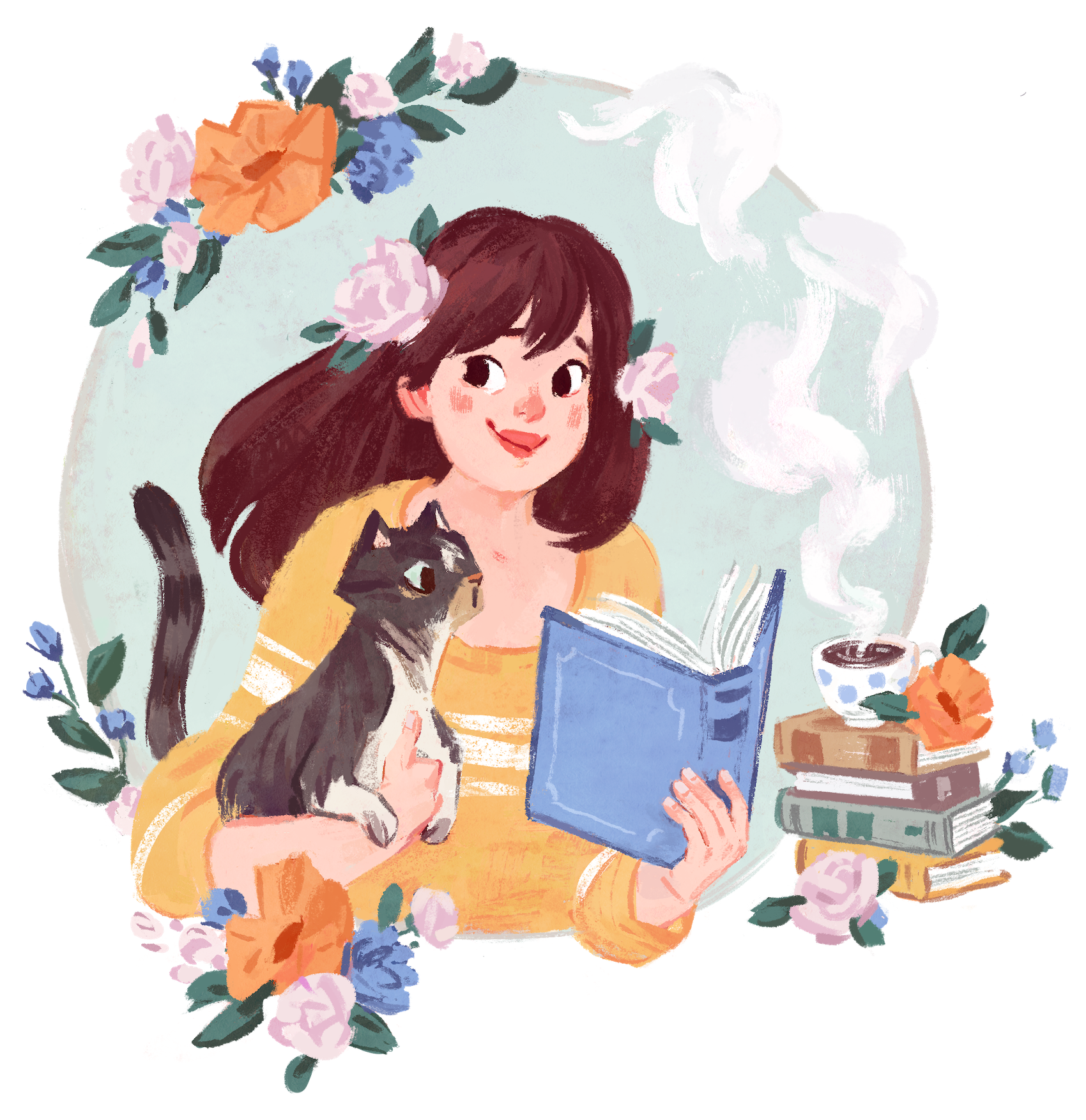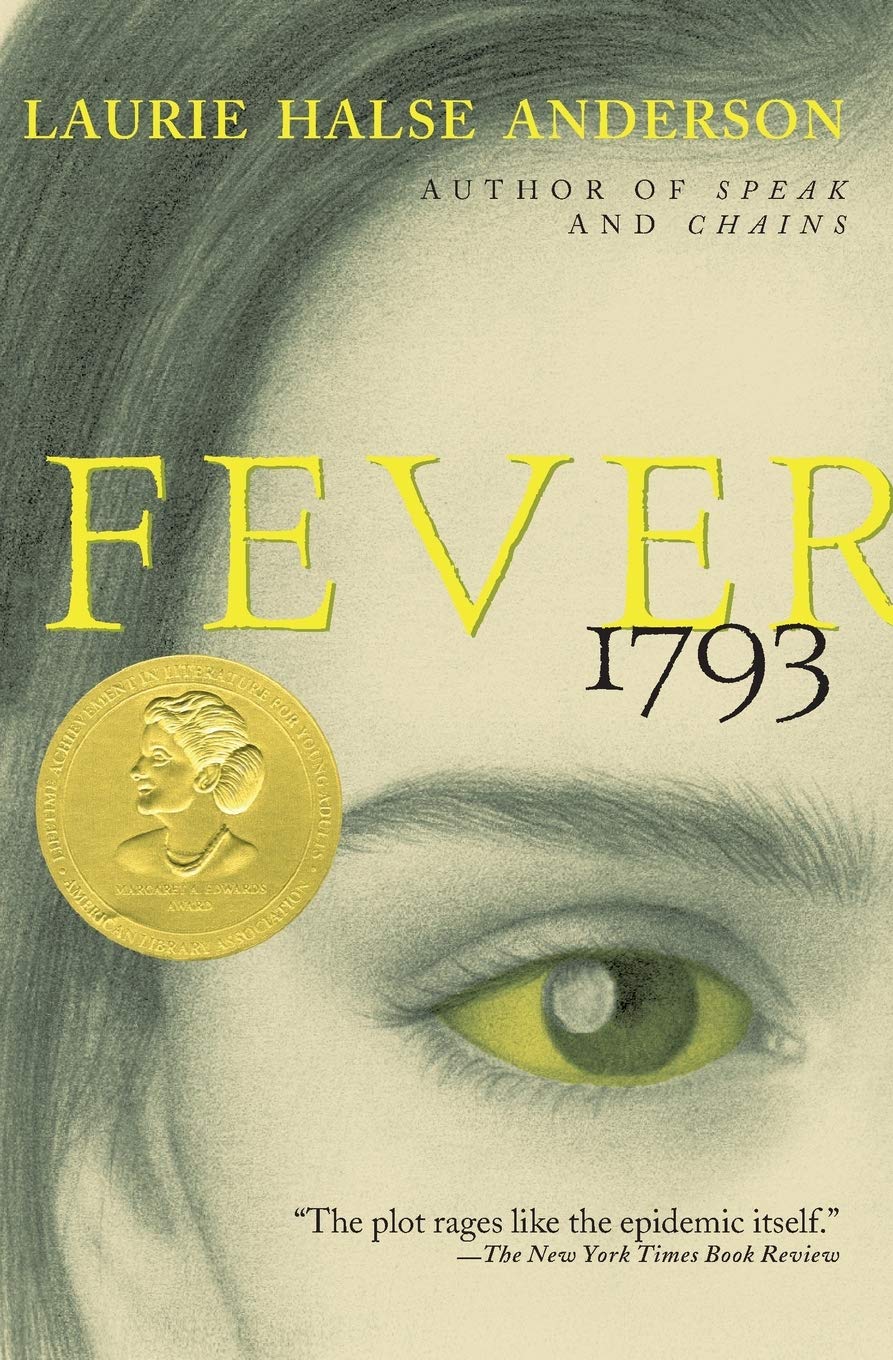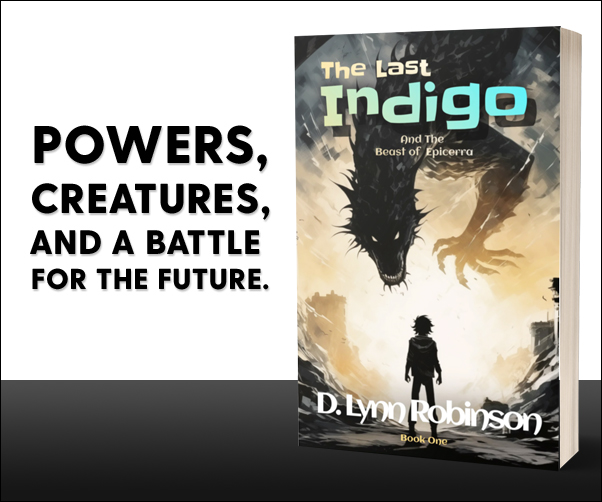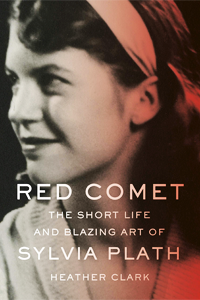

Title Fever 1793
Author Laurie Halse Anderson
Pages 272 Pages
Target Audience Middle Grade
Genre & Keywords Historical Fiction
Publication Date September 1st 2000 by Simon & Schuster Books for Young Readers
Find It On Goodreads ● Amazon ● Chapters ● The Book Depository ● Barnes & Noble ● IndieBound
An epidemic of fever sweeps through the streets of 1793 Philadelphia in this novel from Laurie Halse Anderson where “the plot rages like the epidemic itself” (The New York Times Book Review).
During the summer of 1793, Mattie Cook lives above the family coffee shop with her widowed mother and grandfather. Mattie spends her days avoiding chores and making plans to turn the family business into the finest Philadelphia has ever seen. But then the fever breaks out.
Disease sweeps the streets, destroying everything in its path and turning Mattie’s world upside down. At her feverish mother’s insistence, Mattie flees the city with her grandfather. But she soon discovers that the sickness is everywhere, and Mattie must learn quickly how to survive in a city turned frantic with disease.

“It happened quickly. Polly sewed by candlelight after dinner. Her mother repeated that over and over, ‘she sewed by candlelight after dinner’. And then she collapsed.”
I released the handle and the bucket splashed, a distant sound.
“Matilda, Polly’s dead.”
With the utterance of these few, simple words, the course of Matilda ‘Mattie’ Cook’s life is changed forever. Following the death of her friend at the hands of a mysterious fever, Mattie’s once staid, orderly life is rocked by the arrival of a virulent plague that takes the city by storm. Fever 1793 documents the events surrounding the yellow fever epidemic that swept through Philadelphia in 1793, ultimately resulting in the death of several thousand people and the mass exodus of several thousand more, including George Washington, who sought refuge from the sickness. What was most terrifying about the virus during this time period was the fundamental lack of understanding and knowledge about it. The origin and cause of the illness was unknown, as was the method of transmission and the cure. The rapidity by which it killed was equally astounding. Efforts to stave off the illness were often more damaging than the disease itself. Perhaps what is most chilling of all, however, is the knowledge that this fictionalized account is based on actual events and that many suffered as deeply as Mattie and her family did.
“And so I left home, in a manner quite unpredicted.”
Despite the streets of Philadelphia being filled with the constant peal of church bells signaling the ever-rising death toll and the pestering buzz of mosquitos, the true gravity of their situation does not hit home until Mattie’s own mother falls violently ill with the fever. Forced to leave home with her grandfather in order to protect against getting sick, Mattie embarks on a journey that will test her fortitude and faith in unimaginable ways. As she struggles to navigate an increasingly hostile world, Mattie is forced by necessity to grow up very quickly. She evolves from a relatively fanciful girl with her head in the clouds to one who has to make tough, often inconceivable choices in order to protect herself and the ones she loves. Her growth felt natural and authentic and it was a pleasure watching her straddle the two worlds between adolescence and adulthood with varying success.
“Grandfather said I was a Daughter of Liberty, a real American girl. I could steer my own ship. No one would call me little Mattie. They would call me ‘Ma’am’.”
Mattie is a charming protagonist who fairly leapt off the page. Too big for her clothes, the small apartment in which she resides, and the even smaller life she leads, Mattie is desperate to escape the confines of her ordinary routine working in her family’s shop, the Cook Coffeehouse. Prior to the outbreak of yellow fever, Mattie dreams of what she hopes her life will one day entail, namely of traveling to exotic locales and opening and managing an entire city block worth of establishments, including a dry goods store, restaurant and apothecary. Mattie has ideas about how to improve their own coffee shop as well, although her mother is never receptive to them. Feeling trapped and powerless, Mattie’s dreams give her hope for a different, more promising and empowering future, never realizing that this might come at the cost of what and who she holds most dear.
“My eyes closed. I could see that clear January morning, the moment of release when the balloon floated above the rooftops. Thousands of voices cheered and screamed with delight. Nathaniel grasped my hand and we watched as the gold sphere ferried Monsieur Blanchard and his little black dog away on the wind. I thought all things were possible in heaven and on earth that day.”
This is further demonstrated by Mattie’s fascination with Jean-Pierre Blanchard, who conducted the first hot air balloon flight in North American on January 9th, 1793. Blanchard and his balloon are mentioned throughout Fever 1793. For Mattie, Blanchard’s success is an affirmation, a testament to the possibility of the seemingly impossible. Inspired by the aeronaut’s pioneering journey from the Walnut Street Jail in Philadelphia and across the Delaware Rive to New Jersey, Mattie simultaneously imagines herself as the balloon, escaping to places and situations unknown, and Blanchard himself, filled with new ideas that have the potential to change not only her own world, but that of the world around her.
“He smiled and I got a chill. When had he started smiling at me like that? Maybe I wouldn’t roll up my sleeves. One had to be careful with elbows and boys. I would fish like a lady, with good posture and a demure manner.”
The novel is punctuated by a secondary storyline involving Mattie’s relationship with her childhood crush, Nathaniel Benson. Nathaniel, who is employed as a painter’s assistant, shares Mattie’s wanderlust and also dreams of one day venturing to Paris. Unfortunately, his occupation, Mattie’s mother and the fever work to keep the two apart throughout the course of the novel. What follows is an gentle, understated love story that was made all the more sweet as it contrasted against the horrors around them. Although there is little interaction between the two characters throughout the novel as they are separated by circumstances beyond their control, their few stolen moments together are made all the more enjoyable and easy to appreciate as they act as a ray of sunshine amongst an otherwise dreary backdrop plagued by sickness and death. Anderson also examines the relationship between Mattie and other secondary characters such as Eliza, Nell, and William Cook, Mattie’s grandfather, each of which were special and interesting in their own way.
“Had she ever enjoyed anything? Had every day been a struggle? Perhaps death would be a release, a rest for the weary.”
Anderson’s prose is a thing of beauty. Effortless in its simplicity, it manages to be simultaneously lyrical yet eminently readable and straight to the point all at the same time. Fever 1793 is a wonderful story that would be well suited toward younger readers with a burgeoning interest in history. An instant classic, this novel should be a staple on academic and voluntary reading lists alike. Speaking from my own personal experience for a moment, reading novels like Fever 1793 when I was a child is what eventually inspired my own fascination with history. Anderson brings the past to life with a verve and sensitivity that I have no doubt will inspire many generations to come.
“What did it feel like to die? Was it a peaceful sleep? Some thought it was full of either trumpet-blowing angels or angry devils. Perhaps I was already dead.”
Laurie Halse Anderson, arguably most well known for her award-winning, world-renowned novel, Speak, has done it again. Fever 1793 is the masterfully crafted stark, harrowing story of one girl’s struggle to survive against all odds in the wake of an invisible and unknown foe. Despite documenting one of the most severe and devastating epidemics in America’s history, Anderson still manages to infuse her story with an astounding sense of hope in the resiliency of the human spirit. This was my first experience reading Laurie Halse Anderson’s work and I can safely report that it will not be my last! I cannot recommend Fever 1793 highly enough.












7 Responses
Unlike the majority of people, I had quite a few mixed feelings about Laurie Halse Anderson’s Speak. Though I suppose I did like it well enough overall, despite the problems… I haven’t considered picking this one up, but I definitely want to give it a try now. The historical aspect appeals to me the most here, so I’m looking forward to giving it a shot. Lovely review, Jen!
Sam @ Realm of Fiction recently posted…Review: The Bone Season by Samantha Shannon
Thank you, Sam! 🙂
That said, if I could only recommend one novel penned by Laurie Halse Anderson, it would have to be Wintergirls. As much as I enjoyed Fever 1793, Wintergirls was breath-takingly beautiful and life-changing. My review for it should go live next week, but I’m still struggling to put into words exactly how much it meant to me.
Jen @ Pop! Goes The Reader recently posted…Review: Fever 1793 by Laurie Halse Anderson
Oh wow, that’s another one I haven’t considered too much, but you’re already convincing me. 😉 I’ll definitely keep an eye out for your review!
Sam @ Realm of Fiction recently posted…Review: The Bone Season by Samantha Shannon
I, like Sam above, wasn’t a huge fan of Speak and one of my big bothers with that one was the writing. It felt much too clipped to me but you mention here that this one is a bit lyrical so I think maybe she wrote this one a bit differently. I love the idea of the understated love story and would like to read that but I don’t think this is one for me.
I have Wintergirls on my TBR and will be giving that one a read eventually!
Jenni @ Alluring Reads recently posted…Contaminated Review
The funny thing is, Speak is actually one of the only novels of Anderson’s that I have not read at this point. I began with Fever 1793 and followed that up with Wintergirls, which I loved even more. If I’m being entirely honest, Speak‘s immense legacy is more than a little intimidating and is the primary reason I’ve avoided reading it thus far. The expectations surrounding that novel are so vast that I almost feel destined for disappointment, particularly after how much I’ve loved the aforementioned other two works.
I would love to hear your thoughts on Wintergirls once you’ve completed it! 🙂
Jen @ Pop! Goes The Reader recently posted…Review: Fever 1793 by Laurie Halse Anderson
Oh wow why hadn’t I heard anything about this book before? Especially that it’s Laurie Halse Anderson! Although I’ve never read her other books but I’ve heard about her plenty. This sounds right up my alley, too. I always love books about epidemics and illnesses for some reason. It also sounds like it’s epically written I definitely have to look out for this one! Great review!
Giselle recently posted…Review + Playlist: This Love by Nazarea Andrews
Thanks Giselle!
Anderson really struck a wonderful balance between making this novel accessible to potential middle grade readers while also maintaing a sense of poetry in her prose. I think some of the quotes I included in this review are more than evidence of that 🙂 There’s a beautiful simplicity to her work that I find particularly admirable.
I really hope you enjoy it, and would love to hear your thoughts on it once you’ve read it! 😀
Jen @ Pop! Goes The Reader recently posted…Review: Fever 1793 by Laurie Halse Anderson